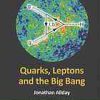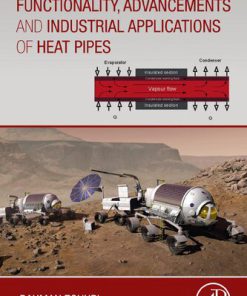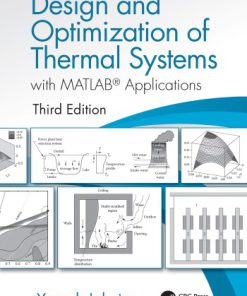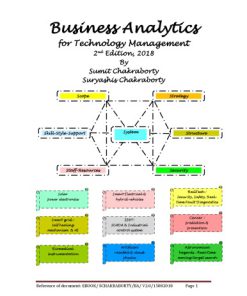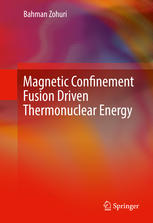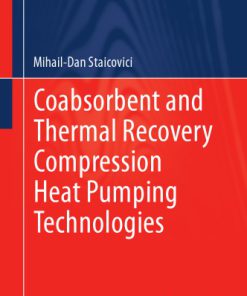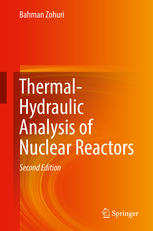Heat Pipe Design and Technology Modern Applications for Practical Thermal Management 2nd Edition by Bahman Zohuri 3319298412 9783319298412
$50.00 Original price was: $50.00.$25.00Current price is: $25.00.
Heat Pipe Design and Technology Modern Applications for Practical Thermal Management 2nd Edition by Bahman Zohuri – Ebook PDF Instant Download/DeliveryISBN: 3319298412, 9783319298412
Full download Heat Pipe Design and Technology Modern Applications for Practical Thermal Management 2nd Edition after payment.
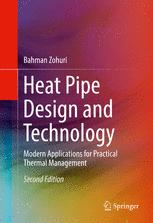
Product details:
ISBN-10 : 3319298412
ISBN-13 : 9783319298412
Author: Bahman Zohuri
This book provides a practical study of modern heat pipe engineering, discussing how it can be optimized for use on a wider scale. An introduction to operational and design principles, this book offers a review of heat and mass transfer theory relevant to performance, leading into and exploration of the use of heat pipes, particularly in high-heat flux applications and in situations in which there is any combination of non-uniform heat loading, limited airflow over the heat generating components, and space or weight constraints. Key implementation challenges are tackled, including load-balancing, materials characteristics, operating temperature ranges, thermal resistance, and operating orientation. With its presentation of mathematical models to calculate heat transfer limitations and temperature gradient of both high- and low-temperature heat pipes, the book compares calculated results with the available experimental data. It also includes a series of computer programs developed by the author to support presented data, aid design, and predict performance.
Heat Pipe Design and Technology Modern Applications for Practical Thermal Management 2nd Table of contents:
Chapter 1: Basic Principles of Heat Pipes and History
1.1 Introduction
1.2 History
1.3 Description and Technology of Heat Pipes
1.4 Principle of Operation
1.4.1 Container
1.4.2 Working Fluid
1.4.3 Wicker or Capillary Structure
1.4.4 Sintered Power Metal
1.4.5 Grooved Tube
1.4.6 Wire Screen Mesh
1.5 How the Heat Pipe Is Working
1.5.1 Heat Pipe Assemblies Design Guidelines
1.5.2 Orientation with Respect to Gravity
1.5.3 Temperature Limits
1.5.4 Heat Removal
1.5.5 Reliability
1.5.6 Forming or Shading
1.5.7 Effects of Length and Pipe Diameter
1.5.8 Wick Structure
1.6 How Heat Pipe Works
1.7 Constraints
1.8 Lesson(s) Learned
1.9 Applications
1.10 Summary
References
Chapter 2: Heat Pipe Theory and Modeling
2.1 Heat Pipe Theory
2.2 Fundamental Considerations
2.3 Operating Characteristics of Heat Pipes
2.4 Operating Limits
2.5 Capillary Pressure Differences or Balance
HeadingsFPar10002676750
2.5.1 Normal Hydrostatic Pressure
2.5.2 Axial Hydrostatic Pressure
2.5.3 Capillary Pressure at the Liquid-Vapor Interface
2.6 Turbulent and Laminar Flow of the Vapor
2.7 One-Dimensional Two-Phase Flow
2.7.1 What Is a Two-Phase Flow?
2.8 Flow Regime
2.9 Heat Transfer
2.10 Condensation of a Pure Vapor
2.11 Sonic Limit or Choking
2.11.1 Sonic Limitation and Startup Problem of Heat Pipes
2.12 Entrainment Limit
2.13 Wicking/Capillary or Circulation Limit
2.13.1 Liquid Pressure Drop
2.13.2 Vapor Pressure Drop
2.13.3 Capillary or Wick Limitation Analysis on Heat Transport
2.13.4 Characteristic of Wick
2.13.5 Single-Layer Wick
2.13.6 Two-Layer Wick
2.13.7 Artery Wick
2.13.8 Monogroove Wick
2.13.9 Variable Thickness Wick
2.13.10 Wick Structure and How Does It Affect the Performance of the Heat Pipes
2.13.11 Wick Structure for Low-Temperature and Higher Heat Transfer in Heat Pipes
2.13.12 Effective Thermal Conductivity of Wick Structure
2.14 Boiling Limit
2.15 Viscous Limit
2.16 Condenser Limit
2.17 Transport Limitations
2.18 The Working Fluid
2.18.1 The Operating Temperature Range
2.18.2 Heat Transfer Requirements
2.18.3 Expecting Body-Force Field
2.18.4 Tolerance of Wick Structure to Boiling
2.18.5 Conventional or Variable Conductance Heat Pipe
2.18.6 Special Requirements
2.18.7 Materials Compatibility and Stability
2.19 Heat Pipe Startup Characteristic and Control
2.19.1 Transient of Heat Pipe Startup Characteristic and Control
2.19.2 Normal Startup Characteristic
2.19.3 Frozen and Startup Characteristic
2.20 Summary
References
Chapter 3: Mathematical Modeling and Available Computer Codes
3.1 One-Dimensional Models
3.2 Overview of Heat Pipes
3.2.1 Selection of the Working Fluid
3.2.2 Selection of the Wick or Capillary Structure
3.2.3 Selection of the Container
3.3 Design Guide and Heat Pipe Selection Criteria
3.3.1 Fluid Inventory
3.3.2 Priming Heat Pipe
3.4 How to Select a Heat Pipe
3.5 What Materials Can Be Used to Construct a Heat Pipe
3.6 When to Consider a Heat Pipe
3.7 Things to Consider, When Designing a Heat Pipe
3.7.1 What the Four Heat Transport Limitations of a Heat Pipe Are
3.7.2 Heat Pipe Diameter
3.7.3 Heat Pipe Containers Design
3.7.4 Heat Pipe Material Selection
3.8 Entrainment and Boiling Limitations
3.9 What the Common Heat Pipe Wick Structure Is
3.9.1 Wick Design
3.10 Steady-State and Transient Regime
3.11 Heat Pipe Steady-State and Transient Analysis
3.11.1 Solution of the Steady-State Equation
Harmonic Function
3.11.2 Solution of the Transient Equation
3.12 Design Criteria and Constraints
3.12.1 Heat Source Characteristics
3.12.2 Heat Sink Characteristics
3.12.2.1 Fins as Heat Sink
Modeling of the Fin Analysis
Fin Experiment and Collecting Data
Numerical Model
Analytical Model
3.12.2.2 Fins Analysis
3.12.2.3 Radiation View Factors
3.12.2.4 Heat Transfer Between Two Finite Graybodies
3.12.2.5 Fin Optimization Analysis
3.12.3 Heat Pipe Thermal Resistance
3.12.4 Effective Thermal Conductivity and Heat Pipe Temperature Difference
3.12.5 Heat Pipe Operating Environments
3.12.6 Wick Structures
3.12.7 Multicomponent Fluids
3.12.8 Maximum Heat Flux
3.12.9 Size and Weight Constraints
3.12.10 Temperature Constraints
3.12.11 Fabrication and Cost Constraints
3.12.12 Heat Pipe Area-Temperature Relations
3.12.12.1 Convective Heat Source and Heat Sink
3.12.12.2 Constant Heat Source and Convective Heat Sink
3.12.12.3 Heat Pipe-Cooled Leading Edge
3.12.13 Heat Pipe Manufacturing
3.13 Optimal Heat Pipes
Heat Pipe Assembly Design Guidelines
3.14 Design Examples
3.15 Computer Codes for Designing Heat Pipes
3.15.1 SINDA/FLUINT Computer Codes for Loop Heat Pipe Analysis
3.15.1.1 Heat Pipe Modeling and Two-Phase Loops Using SINDA/FLUINT
3.15.1.2 Two-Phase Capabilities
3.15.1.3 How Not to Model a Heat Pipe
3.15.1.4 How to Model a Heat Pipe
3.15.1.5 SINDA/FLUINT Code Availability
3.15.2 LERCHP NASA Glenn Steady-State Heat Pipe Code
3.15.2.1 Features Common to All Code Versions
3.15.2.2 Thermal Boundary Condition Specifications
3.15.2.3 Individual Features of Versions
3.15.2.4 LERCHP Computer Code Availability
3.15.3 Los Alamos (HTPIP) Steady-State Heat Pipe Analysis Program Codes
3.15.3.1 HTPIPE Computer Code Availability
3.15.4 ANLHTP: A Computer Code for the Simulation of Heat Pipe Operation
3.15.4.1 ANLHP Computer Code Availability
3.15.5 Heat Pipe Fluid (HPF) Properties Program
3.15.5.1 Heat Pipe Fluid (HPF) Properties Program Availability
3.15.6 Groove Analysis Program (GAP) Computer Program
3.15.6.1 Groove Analysis Program (GAP) Computer Program Availability
3.15.7 GASPIPE 2 Computer
3.15.7.1 GASPIPE 2 Computer Program Availability
3.15.8 Computer Program GRADE
3.15.8.1 GRADE Computer Program Availability
3.15.9 Extended Development of Variable Conductance Heat Pipes
3.15.10 SODART Program
3.15.10.1 SODART Program Availability
3.16 Computer Codes for Heat Transfer and Fin Designs and Materials Composite
3.16.1 Existing Computer Codes
3.16.2 TOPAZ2D Finite Element Computer Codes and Its Pre- and Post-processors
3.16.2.1 TOPAZ2D Program Availability
3.16.3 TOPAZ3D Finite Element Computer Codes and Its Pre- and Post-processors
3.16.3.1 TOPAZ3D Program Availability
3.16.4 FACET Computer Code
3.16.4.1 FACET Program Availability
3.16.5 MONTE2D Computer Code
3.16.5.1 MONTE2D Program Availability
3.16.6 MONTE3D Computer Code
3.16.6.1 MONTE3D Program Availability
3.16.7 VIEW Radiation View Factor Computer Code
3.16.7.1 VIEW Program Availability
3.16.8 ALE3D (Arbitrary Lagrange/Eulerian Multiphysics 3D) Computer Code
3.16.8.1 ALE3D Program Availability
3.16.9 NASTRAN Computer Code
3.16.9.1 NASTRAN Program Availability
3.16.10 NASA TRASYS Computer Code
3.16.10.1 TRASYS Program Availability
3.17 Piping Stress Analysis Software
3.17.1 Piping Stress Analysis Software Availability
3.18 Other Heat Pipe Analysis Codes
3.18.1 VCHPDA: A Computer Program Subroutine Usage Code
3.18.1.1 VCHPDA: A Computer Program Subroutine Usage Code Availability
3.18.2 HPMAIN Computer Code
3.18.2.1 HPMAIN Computer Code Availability
3.18.3 SMLBUB Spherical Bubble Model Computer Program
3.18.3.1 SMLBUB Computer Code Availability
3.19 COMSOL Multiphysics Software
3.19.1 COMSOL Multiphysics Software Availability
References
Chapter 4: Application of Heat Pipe in Industry
4.1 Application of Heat Pipe in Industry
4.2 Overview
4.2.1 Cooling of Electronic Components
4.2.2 Spacecraft
4.2.3 Energy Conservation
4.2.4 Heat Pipe Heat Exchanger
4.2.5 Preservation of Permafrost
4.2.6 Snow Melting and Deicing
4.2.7 Heat Pipe Inserts for Thermometer Calibration
4.2.8 High-Temperature Heat Pipe Furnace
4.2.9 Miscellaneous Heat Pipe Applications
4.3 Energy-Dependent Boundary Equations
4.4 Heat Pipe in Space
4.4.1 Radioisotope Systems
4.4.2 Fission Systems: Heat
4.4.3 Fission Systems: Propulsion
4.4.4 Heat Pipe Power System
4.4.5 Space Reactor Power Systems
4.4.6 Project Prometheus 2003
4.5 Space Shuttle Orbiter Heat Pipe Applications
4.6 Heat Pipe in Electronics
4.7 Heat Pipe in Defense and Avionics
4.7.1 On the Ground
4.7.2 On the Sea
4.7.3 In the Air
4.7.4 In Space
4.8 Heat Pipe as Heat Exchanger
4.9 Heat Pipe in Residential Building
4.10 Heat Pipe Applications in Thermal Energy Storage Systems
4.10.1 Energy Storage Methods
4.10.1.1 Electrical Storage
4.10.1.2 Thermal Energy Storage
Sensible Thermal Energy Storage
Latent Heat Thermal Energy Storage
Thermochemical
4.10.2 Latent Heat Thermal Storage Materials
4.10.3 PCM Classification
4.10.3.1 PCMs for Different Thermal Storage Applications
4.10.4 Latent Heat Thermal Energy Storage Systems Assisted by Heat Pipes
References
Chapter 5: Heat Pipe Manufacturing
5.1 Manufacturing of Heat Pipes
5.1.1 Envelope
5.1.2 End Cap
5.1.3 Fill Tube
5.1.4 Wick
5.1.5 Working Fluid
5.2 Heat Pipe Manufacturing Procedures
5.3 Cleaning of Parts
5.4 Assembly of Heat Pipes
5.4.1 Summary of Assembly of Heat Pipes Procedures
5.5 Evacuation and Charging
5.5.1 Fluid Charging
5.5.2 Fluid Purity and Inventory
5.5.3 Analysis of Gas Blockage
5.5.4 Effect of Heat Pipe Design and Operating Conditions on Gas Blockage
5.6 Full Tube Closure
5.7 Heat Pipe Testing Techniques
5.7.1 Mechanical Sounders
5.7.2 Wick Wetting
5.7.3 Performance Versification
References
Chapter 6: Other Types of Heat Pipes
6.1 Other Types of Heat Pipes
6.2 Thermosyphon
6.3 Loop Heat Pipes/Capillary Pumped Loop
6.4 Pulsating Heat Pipes
6.5 Micro-heat Pipes (MHPs)
6.6 Constant Conductance Heat Pipes (CCHPs)
6.7 Variable Conductance Heat Pipes (VCHP)
6.7.1 Variable Conductance with Gas-Loaded Heat Pipes
6.8 Rotating and Revolving Heat Pipes
6.9 High-Temperature Heat Pipes (Liquid-Metal Heat Pipes)
6.10 Cryogenic Heat Pipes
People also search for Heat Pipe Design and Technology Modern Applications for Practical Thermal Management 2nd:
what is heat pipe technology
heat pipe explained
heat pipe temperature range
heat pipe design
heat pipe design handbook
Tags: Heat Pipe Design, Technology Modern, Applications, Practical Thermal, Management, Bahman Zohuri
You may also like…
Science (General)
Functionality, Advancements and Industrial Applications of Heat Pipes 1st Edition Bahman Zohuri
Computers - PC & Video Games
Business & Economics - Management & Leadership
Business Analytics for Technology Management 2nd Edition Sumit Chakraborty
Science (General)


